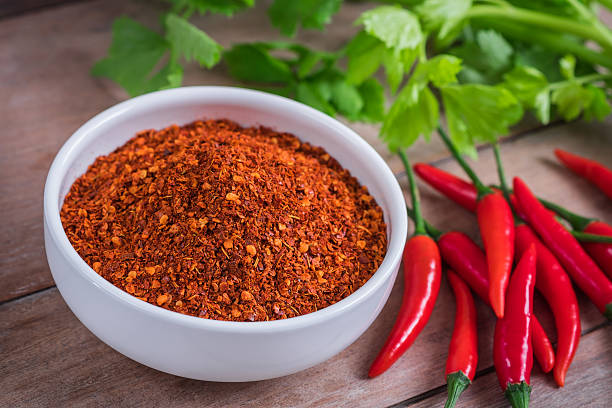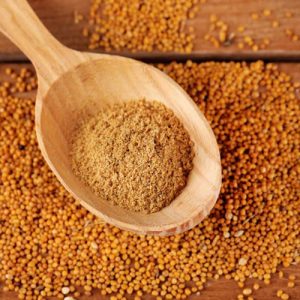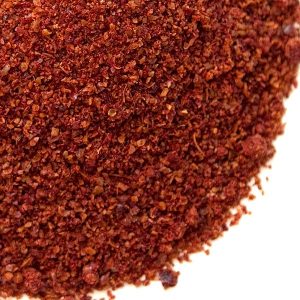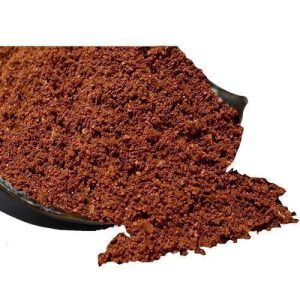Substitutes for Cayenne Pepper: 5 Best Alternatives + FAQs!

The cayenne pepper, sometimes known as the king of spices because of its “bite from hell,” is now one of the spices that modern and traditional global cuisines cannot live without. What are the most acceptable cayenne pepper substitutes? We’ll suggest a few common (or less common) substitutes for cayenne pepper, such as black pepper, red pepper powder, Tabasco, ginger, and mustard.
Before you go for any available replacements, you should examine the end aim, which is what it will do to your food, its taste, and structure, if it will completely transform the meal or simply the spice tone? Here are some ideas on how to appropriately substitute cayenne pepper:
-
Black pepper

Black pepper is a member of a separate family of spicy spices, yet it is still one of the most often used spices in home and commercial kitchens. This perennial, evergreen and climbing plant is native to Asia and southern India. This plant is unique in that it grows in the shape of a vineyard and may grow to incredible heights of over 10 meters.
Tin berries, which come in various colors, including black, green, white, and red, are the oldest spice known to humans, going back to Roman times. It will not give the meal the crimson hue that cayenne is known for, but it will give it an excellent and richer flavor. The amount of black pepper (or any of its variants) is entirely up to personal preference, with the advice of experts; for best results and flavor, use it freshly ground.
-
Red pepper powder

Even regular red pepper powder can be an excellent alternative for cayenne pepper, especially if you’re looking for a milder version. Follow the recipe’s directions; if you want it more robust, add more; if you want it milder, add less. It will help with the hue of your dish, and the dosage is entirely up to you.
One of the downsides of pure red pepper powder is that if used in excess, it can affect the flavor of the food and turn it into a strong pepper flavor, obliterating all other flavors.
-
Tabasco sauce

Another excellent option for cayenne pepper, which you may use in salads, appetizers, main courses, and desserts, is Tobasco. This renowned hot sauce, made with ground chili peppers and vinegar, is one of the few with a truly unusual and unique production method. The only factory globally that produces this unique sauce is located on Avery Island in Louisiana, USA, and the sauce itself is exported to over 160 nations.
Even though you can find the sauce in almost every kitchen and on almost every restaurant table globally, the advice for usage is the same as with other comparable products - it all depends on how much heat and spice you can handle. Due to the vinegar component of Tabasco, it is also recommended that you use it with caution. A small amount might enhance the overall flavor of the food; however, too much can result in a sour texture and flavor.
-
Mustard powder

Surprisingly, mustard is one of the best ways to add flavor and spice to your food. This item is made from unpeeled mustard seeds for mild varieties and peeled seeds for aromatic and spicy varieties. They come in various flavors, the most popular Dijon, French, English, and American.
Thanks to the mustard’s distinct and identifiable flavor, each meal will be unique and far from dull. Try mixing it with mayonnaise; mustard and mayonnaise are supposed to be best companions. In any event, adding ginger to your cuisine should be done with caution, with the primary goal of increasing the dish’s richness.
Some Interesting Cayenne Pepper Facts
Scovill’s scale places mature peppers in the fairly intense spice category. The cayenne pepper (lat.Capsicum Annuum) is a spice made from the bright red fruit of the cayenne pepper plant, which is pounded into a fine powder.
The cayenne pepper is very popular; the fruit may be eaten raw or cooked, but the powder or oil is most commonly used in cooking. The plant is grown worldwide, particularly in India, Mexico, and East Asia, where it has become a staple of traditional food and even a synonym for their national cuisine. Use your imagination when using cayenne pepper; it will go nicely as an inevitable spice in typical international cuisine.
Many people cannot distinguish between hot and non-spicy foods, and for them, the meal is either spicy or non-spicy. With the addition of cayenne pepper to practically any salty or sweet food, from chili con carne to plain steak, egg scrums, and chocolate and ice cream. You can effectively add alternative ingredients and cayenne pepper replacements to any of these meals.
It could hardly be further from the truth. With only a few changes in spices, you can make a significant impact while keeping your cuisine pleasant and adding even more health to your dish. Little experimentation can only aid in discovering new tastes and the addition of a new dimension to old ones.
How do you find the most acceptable cayenne pepper substitute?

Isn’t it true that hot is hot, and spice is spice? No. To achieve the most excellent taste, some fundamental understanding of spicy spices is essential, no matter how easy it appears to be. Pay attention to the substitution you will use if you do not want to use cayenne pepper for whatever reason.
The first and most important guideline is to determine how much of a spice you want to add to the meal, paying careful attention to what the spice will do to the food in terms of shape, flavor, texture, and so on. It might be any of the spices mentioned in this article, or it could be anything else from the hot spice family. Making the correct choices will make you the star of the kitchen and certainly add to the explosion of flavors in whatever you’re preparing.
Is it possible to use red pepper flakes instead of cayenne pepper?
You certainly can. Red pepper flake comprises numerous distinct varieties of red peppers and frequently includes dry seeds. In truth, it is essentially the same spice of a specific kind but with a lesser flavor and power. If you want to use red pepper flakes instead of cayenne pepper in the recipe, the recommended dosage is to use more red pepper flakes than you would with cayenne.
Conclusion

Since it was first produced and utilized, cayenne pepper, the king of all fiery spices, has been an infinite source of creativity in kitchens worldwide. The primary element in cayenne pepper, capsaicin, is a beneficial natural substance for lowering blood pressure, lowering the chance of cancer formation, and aiding in dieting as an efficient appetite suppressant.
Enjoy the unlimited possibilities of this delectable and spicy spice by being creative and innovative! It simply goes to show that no purpose is complete without cayenne pepper. The list of recommended alternative ingredients, including black pepper, red pepper powder, Tabasco, mustard, and ginger, follows the same guideline. Finally, a word of caution: be cautious when using it because our taste receptors require some time to adjust to its spiciness. When you first start using it, go slowly at first, and you can always add more later if required.











